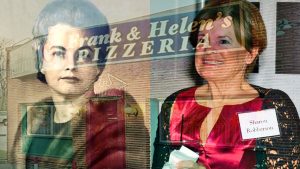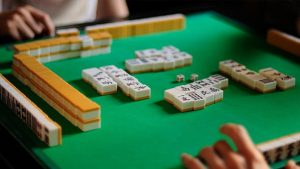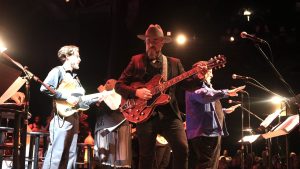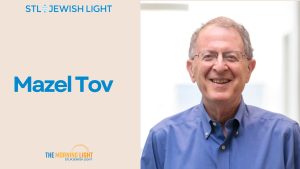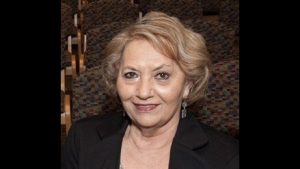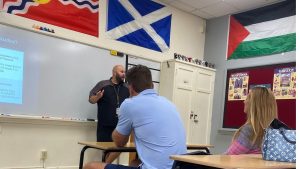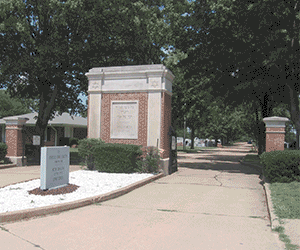Passover Seder can cater to a child’s curiosity
Published March 26, 2007
You know how little kids ask their parents “why” all the time? Everything is a question. Why is the sky blue? Why do I sleep with my eyes closed? Why is your name Mommy? When we give them an answer, they usually follow up with another “why” all over again. This unending dialogue can drive a parent crazy.
In Judaism, the curious child in all of us keeps our religion alive. This lesson is never more clear than at Passover. In fact, when it comes to the Passover Seder, the question “why” is the focus of the entire service, and the answers are found in the Haggadah, which means “retelling the story.”
The ancient rabbis who created the symbolic Passover Seder were nothing short of brilliant. Step by step, from making a Hillel sandwich of “bricks-and-mortar” to opening the door for Elijah, the sages ingeniously constructed a participatory service that caters specifically to the next generation of Jews. After a few blessings, the festive meal kicks up a notch with the Four Questions, called the “Mah Nishtanah,” and the rest of the ceremony heats up from there. The rituals are designed to stimulate all the senses so that even the grape juice drinkers can stay awake long enough to see if the prophet ever shows up. Just when you think the party is over and you’re stuffed with matzah balls and macaroons, it’s time for the wound-up kids to scramble for the Afikomen and win a prize. From beginning to end, the Passover Seder is a masterpiece of pedagogy.
Most children learn by doing, and there’s plenty to do at the Passover Seder, from acting out the Ten Plagues to singing the Dayenu and lots of eating in between. For the visual learners, the seder plate alone tells the whole story of our Exodus from Egypt more than 3,000 years ago. The shankbone, for example, explains how the Hebrews sacrificed a lamb to God in gratitude for “passing over” their first-born child. The marror or bitter herbs shows the bitterness that our ancestors experienced as slaves. The karpas or parsley symbolizes spring and the spirit of hope for our future. A roasted egg tells of the continuing cycle of life, as well as the festival offering brought to the Temple in Jerusalem in ancient times. The sticky charoset, which is a delicious combination of apples, wine, walnuts, honey, and cinnamon, depicts the mortar that our forefathers used to make bricks in Egypt. A dish of salt water illustrates the tears that we shed when we were slaves in Egypt.
When the youngest child proudly asks, “Why is this night different than all other nights?”, everyone at the table is encouraged to play a role in answering him. For the one and only time of the year, probably, the youngster has everyone’s undivided attention.
By tradition, the stimulating parent-child dialogue begins:
“On all other nights we eat either chametz (leavened bread) or matzah, but tonight we only eat matzah. Why?”
“On all other nights we eat any vegetables, bitter or not bitter, but tonight we only eat marror (bitter herbs). Why?” “On all other nights we do not have to dip our food even once, but tonight we dip twice — once karpas in salt water and once marror in charoset. Why?”
“On all other nights we sit either straight or leaning, but tonight we all lean on pillows instead of sitting up straight in our chairs. Why?”
Now that’s a mouth full! Fortunately, the Haggadah provides all the clever, visual guidelines parents need to teach their children about how their Jewish history influences who they are today.
In Deuteronomy, it says, “And thou shall tell thy son on that day, saying, ‘This is what the Lord did to US when WE came out of Egypt.”
Besides, it’s not so much the questions that are important, but the act of asking that is the greater lesson. In short, the CliffsNotes answer is: We eat matzah and marror to remind us of when we were slaves; we eat charoset and recline on pillows to remind us of our freedom. The miracle of the story is that we were slaves, but “Hashem (the God of our ancestors)…took us out.” We were slaves and kings on the same night, and that’s why we celebrate Passover.
Moreover, the Haggadah is way ahead of its time when it comes to educational parenting advice as explained in the midrash of the four children (wise, wicked, simple, young), which exists in all of us. According to the Torah, it’s a mitzvah, a commandment, for parents to explain the meaning of Passover and Exodus in a way that every type of child can understand.
For example, the wise child wants to learn. When this one asks, “What are the testimonies, the statues, and the laws which the Lord your God has commanded you?,” you should teach him “all the laws from the Mishna up to the last law of the seder, which is that we are not allowed to eat after the Afikoman.”
When the wicked child asks, “Why do you go to the trouble of doing this service?,” he thinks that the mitzvohs are only for the other person and not for himself. Even when the evil one doesn’t believe in the Torah, he is still accepted in the Jewish family because he is a Jew. Explain to him, “It was because of the mitzvohs that Hashem did miracles for ME (and not for people like him) when I left Egypt.”
When the simple child asks, “What is this all about?,” say to him, “We do these mitzvohs because Hashem used his strong hand to save us from slavery in Egypt.”





